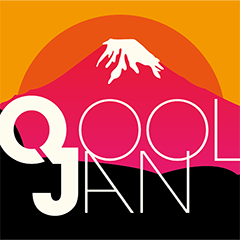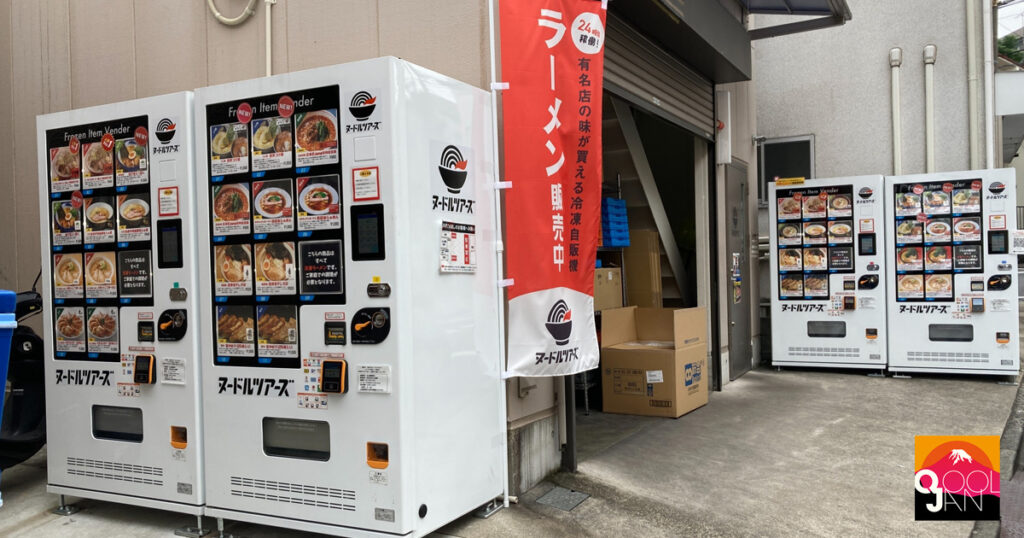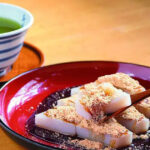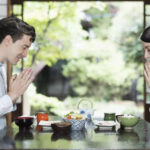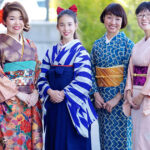Have you ever tried to get a ticket for any Japanese noodles from a vending machine at noodle shops in Japan?
We call this ticket “食券 (Shokken)” in Japanese. 食 (Shoku) means food and 券 (Ken) means a ticket.
I knew that travelers who tried to buy 食券 for Japanese noodles from a vending machine had some problems the other day. Most vending machines are written only in Japanese and some of them don’t even have any pictures. That’s why many travelers can not see what is on offer at a noodle shop.
There are so many noodle shops and each shop has a different vending machine, however it is almost the same way to buy 食券 from it. So I’m going to give you some general tips and some useful vocabulary for when you try it.
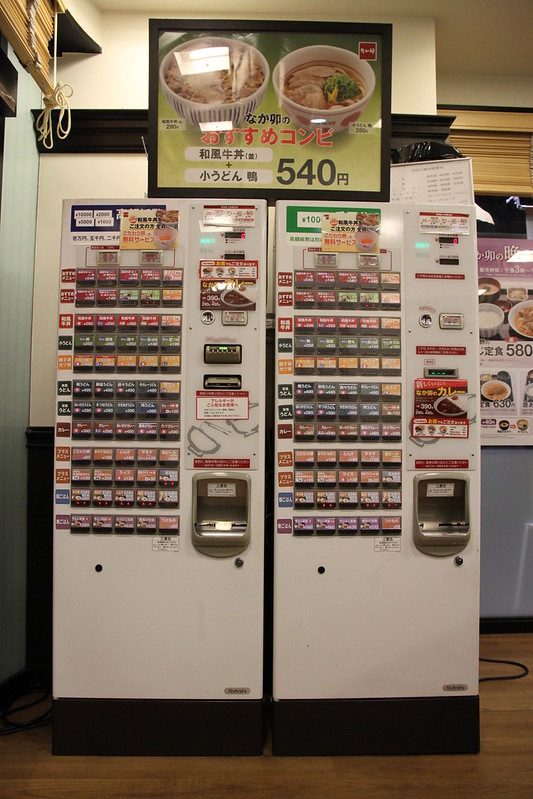
Credit: mayanais via Flickr
How to buy a ticket for Japanese noodles from the vending machine
- Decide what you want to eat from many buttons, which have different toppings and noodle types written on them.
- Insert the amount of money required (usually there are 2 parts to insert money, a bill and coins). When you insert some money, several buttons are lighted up. That means you have several options from these.
- Press the button for what you want to eat.
- The ticket comes out.
How to receive your change
It depends on the vending machines, however there is usually a small handle or small button written in Japanese “Otsuri (おつり・オツリ・お釣り)”. Otsuri means small change.
- Turn the small handle or press the small button.
If you are lucky to choose the nice machine, then small change comes out automatically.
How to cancel after you insert some money
It depends on the vending machines, however there is usually a small handle or small button written in Japanese “Henkyaku (へんきゃく・ヘンキャク・返却)”. Henkyaku means return.
How to read a Japanese menu on a vending machines for noodles
Here is some vocabulay that will help you buy 食券 from the vending machine at Ramen shops.
There are many keywords to read for a Japanese menu on a vending machine, however these can help you. So before your trip to Japan, please save this article on your smart phone and tablet through Pocket or evernote.
Keywords on the menu are in Japanese in general:
-Dai (だい・ダイ・大) is big or large.
-Chu (ちゅう・チュウ・中) is medium.
-Shou (しょう・ショウ・小) is small.
-Mini (ミニ)
-Nami (なみ・ナミ・並み) is ordinary or normal.
-Futoi (ふとい・フトイ・太い) is thick.
-Hosoi (ほそい・ホソイ・細い) is thin.
-Goku (ごく・ゴク・極) is extremely.
-Toku (とく・トク・特) is special or remarkable.
-Hiyashi (ひやし・ヒヤシ・冷し) is cold.
-Atatakai (あたたかい・アタタカイ・温かい) is hot.
-Toku mori (とくもり・トクモリ・特盛) is specially large quantity.
-Oo mori (おおもり・オオモリ・大盛) is large quantity.
-Chu mori (ちゅうもり・チュウモリ・中盛) is medium quantity.
-Ko mori (こもり・コモリ・小盛) is small quantity.
-Nami mori (なみもり・ナミモリ・並み盛) is ordinary quantity.
-Futsu mori (ふつうもり・フツウモリ・普通盛) is ordinary quantity.
-Noukou (のうこう・ノウコウ・濃厚) is thick taste of soup.
Keywords for Ramen on the vending machine
-Futo men (ふとめん・フトメン・太麺)
Ramen that is thicker than normal.
-Hoso men (ほそめん・ホソメン・細麺)
Ramen that is thinner than normal.
-Kaedama (かえだま・カエダマ・替え玉)
It is a second helping of Ramen. You can’t usually refill the soup. If you want to eat more, you should leave the soup.
-Shouyu Ramen (しょうゆらーめん・ショウユラーメン・醤油拉麺)
Ramen is in the broth with soy sauce.
-Shio Ramen (しおらーめん・シオラーメン・塩拉麺)
Ramen is in the broth with salt.
-Miso Ramen (みそらーめん・ミソラーメン・味噌拉麺)
Ramen is in the broth with Miso which is soybean paste.
-Tonkotsu Ramen (とんこつらーめん・トンコツラーメン・豚骨拉麺)
Ramen is in the pork born broth which is white and milky.
-Negi Ramen (ねぎらーめん・ネギラーメン・ネギ拉麺)
Ramen is topped with a lot of chopped leek.
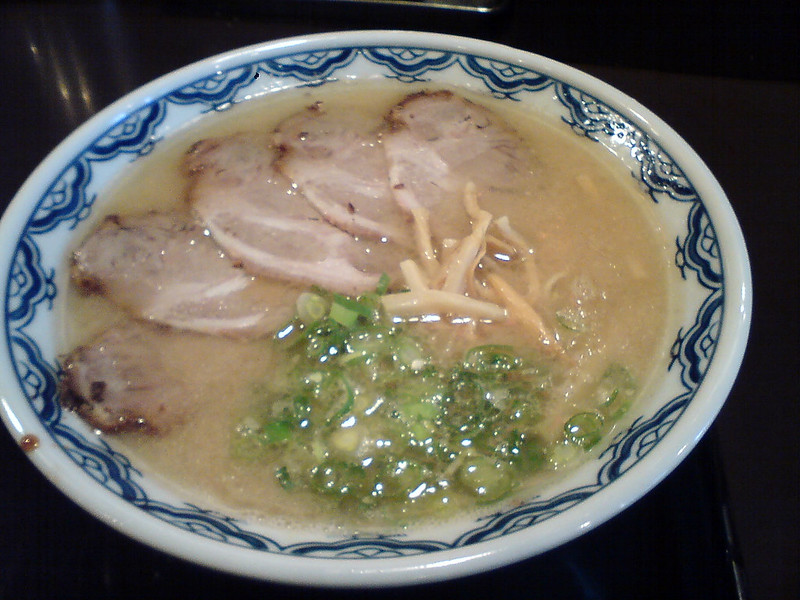
Credit: Zanpei via Flickr
-Cha shu men (ちゃーしゅーめん・チャーシューメン・チャーシュー麺)
Ramen is topped with sliced roasted pork fillets.
-Tan tan men (たんたんめん・タンタンメン・坦々麺)
It is Szechuan style sesame spicy noodles.
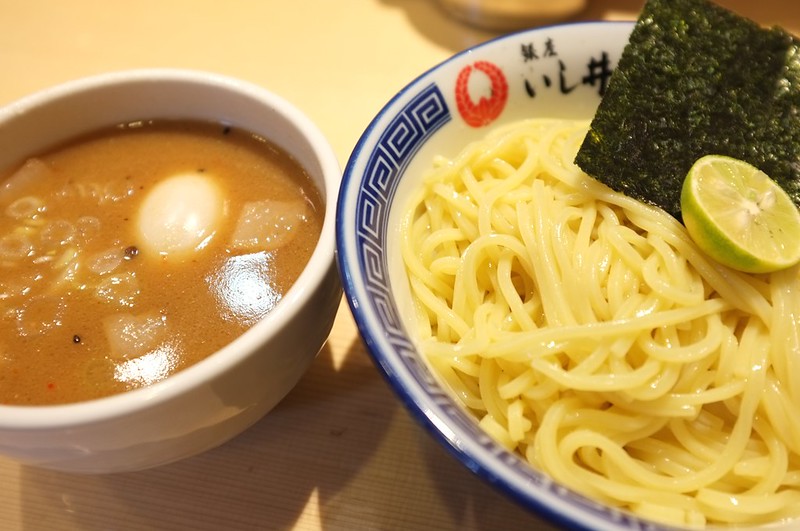
Credit: Zengame via Flickr
-Tsuke men (つけめん・ツケメン・つけ麺)
Ramen and the broth are served separately and you dip it into it.
Keywords for toppings:
-Menma (めんま・メンマ)
It is bamboo shoots which have been boiled, dried or preserved in salt, soaked in hot water and then seasoned.
-Nori (のり・ノリ・海苔)
Dried seaweed
-Wakame (わかめ・ワカメ)
Seaweed
-Negi (ねぎ・ネギ)
Chopped leek
-Char siu (ちゃーしゅー・チャーシュー)
Sliced roasted pork fillet
-Mori awase (もりあわせ・モリアワセ・盛り合せ)
Ramen is topped with these pieces of food above.
-Ajitsuke Tamago (あじつけたまご・アジツケタマゴ・味付玉子)
It is a boiled egg with soy sauce flavor
-Onsen Tamago (おんせんたまご・オンセンタマゴ・温泉玉子)
It is an egg slow-boiled so that the yolk is hard but the white is still soft (traditionally cooked in a hot spring).
Others:
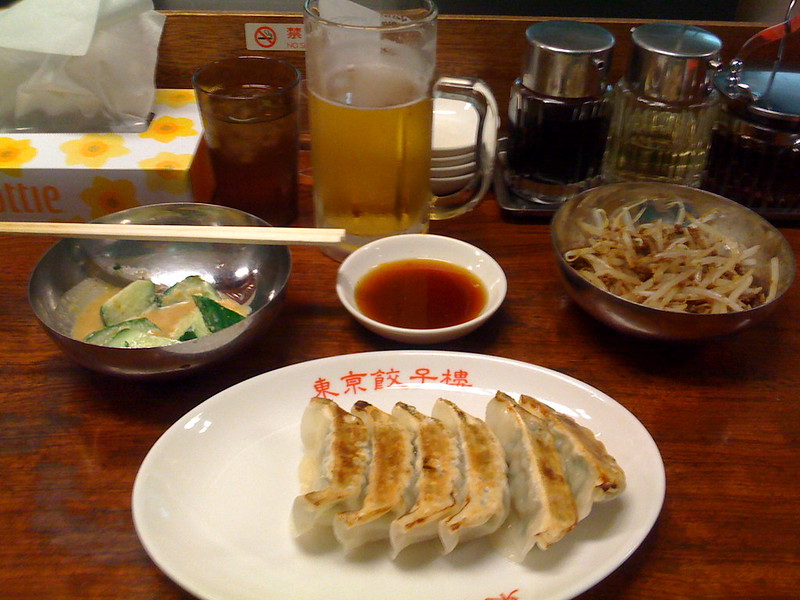
Credit: Kimtaro via Flickr
-Gyoza (ぎょうざ・ギョウザ・餃子)
A dumpling with minced pork and vegetable stuffing
-Raisu (らいす・ライス)
Rice
-A bottle of Beer (びんビール・瓶ビール)
Keywords for Udon and Soba on a vending machine
Here is some vocabulary that can help you buy 食券 from the vending machine at Udon and Soba shops.
-Udon (うどん・ウドン・饂飩)
It is made from wheat and white Japanese noodle.
-Soba (そば・ソバ・蕎麦)
It is made from buckwheat, and brownish, beige or grayish Japanese noodle.
-Kake Udon or Soba (かけ・カケ)
It is very simple. After boiling Udon or Soba, they put it in a flavored dashi broth with soy sauce. This type is essential to other Udon and Soba dishes.
-Tempura Udon or Soba (てんぷら・テンプラ・天麩羅)
It is topped with Tempura.
Tempura is thin slices or stripes of vegetables and seafood are dipped in batter, then briefly deep fried in hot oil. It depends on the shops, however it is topped with 1 or 2 Shrimp Tempura.
If you want to know more about Tempura, see this article.
-Kakiage Udon or Soba (かきあげ・カキアゲ・かき揚)
It is topped with Kakiage.
Kakiage is a kind of Tempura which uses different ingredients, such as sliced carrot, burdock, onion, and so on, are mixed together in tempura batter before deep frying.
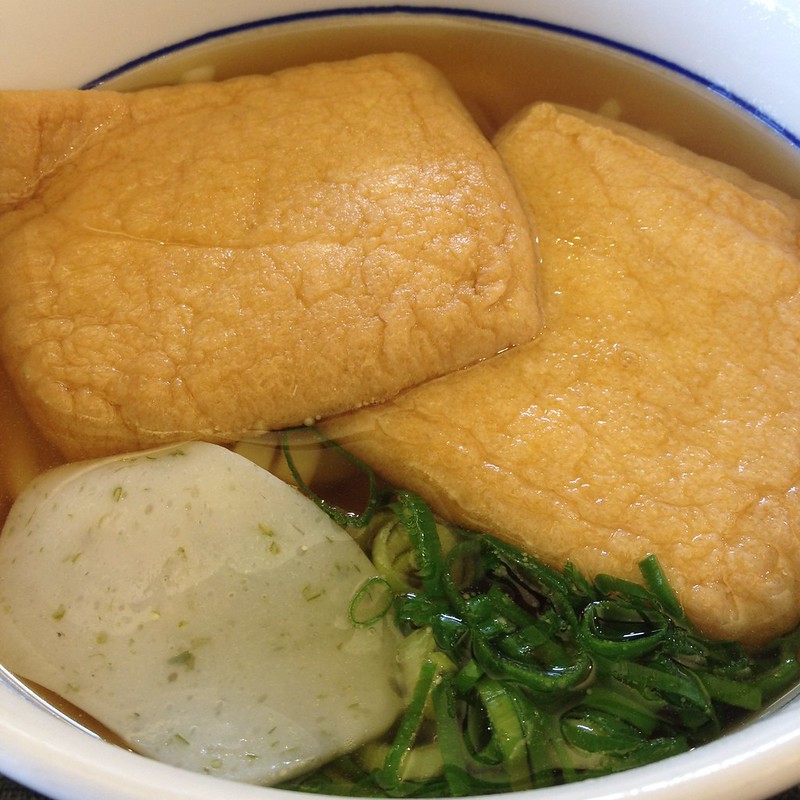
Credit: Yuya Tamai via Flickr
-Kitsune Udon or Soba (きつね・キツネ・狐)
It is topped with deep-fried bean curd which is brown, so we call it Kitsune.
Kitsune in Japanese means a fox, and has same color.
-Tanuki Udon or Soba (たぬき・タヌキ・狸)
It is sprinkled with bits of deep-fried tempura batter.
-Wakame Udon or soba(わかめ・ワカメ)
It is topped with seaweed.
-Chikara Udon or Soba (ちから・チカラ・力)
It is topped with Mochi that is a rice cake.
-Tsukimi Udon or Soba (つきみ・ツキミ・月見)
It is topped with a raw egg.
-Niku Udon or soba (にく・ニク・肉)
It is topped with cooked sliced beef.
-Bukkake Udon or Soba (ぶっかけ・ブッカケ・ぶっ掛け)
The soup broth which is thicker and sweeter is poured on the noodles.
-Curry Udon (カレー)
It is poured curry.
-Hiyashi Udon (ひやし・ヒヤシ・冷し)
The soup broth is cold.
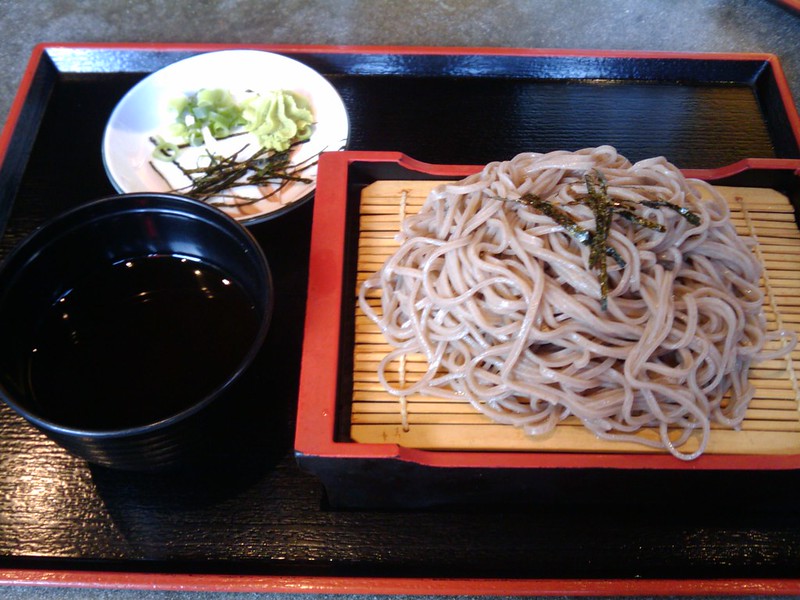
Credit: >littleyiye< via Flickr
-Mori Soba (もり・モリ・盛り) and Zaru Soba (ざる・ザル)
It is said that there are few differences between Mori and Zaru, however they seem almost exactly the same except with shredded Nori or not. When you understand a bit of Japanese words on the vending machines, it might help you to guess what they are. I hope you will be able to eat a noodle dish that you want, on your visit to Japan.
Enjoy your meal!
